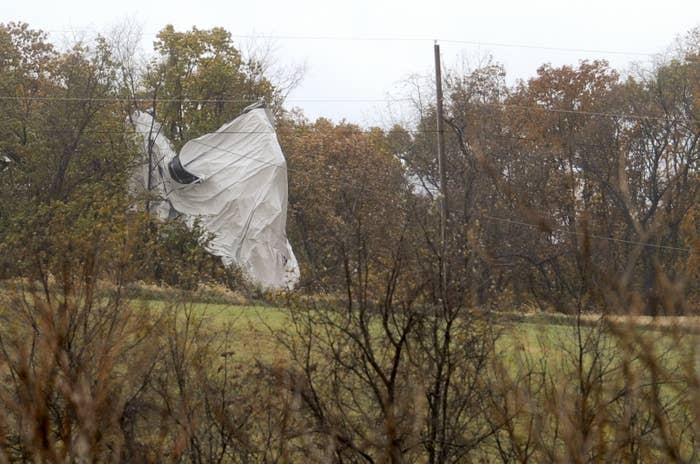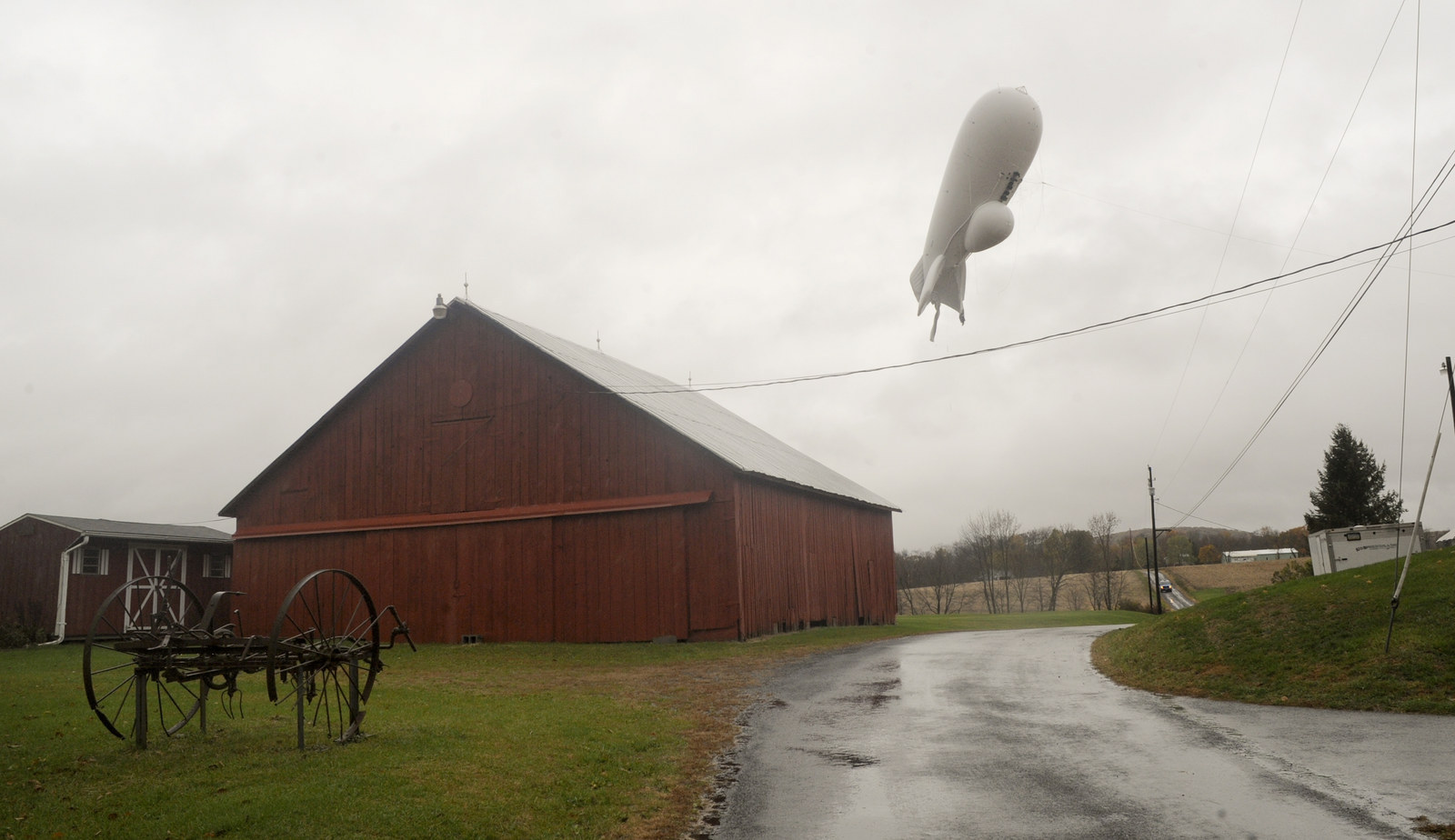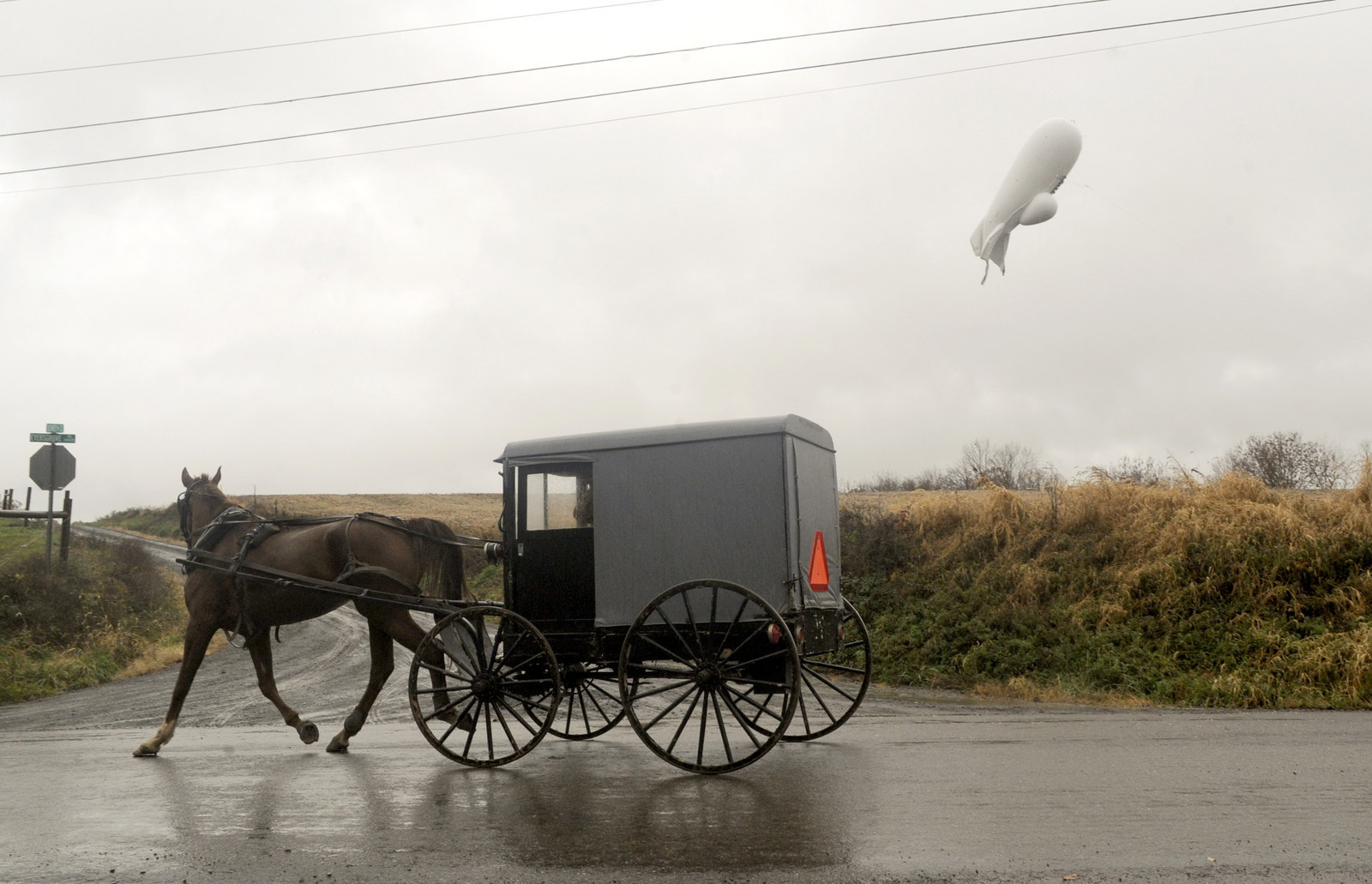
State troopers in Pennsylvania on Thursday were using shotguns to shoot and deflate the giant military blimp that came to rest in a grove of trees after floating unmanned for four hours.
The giant helium-filled JLENS aerostat somehow came untethered at about 12:20 p.m. ET Wednesday at the Edgewood Area of Aberdeen Proving Grounds in Maryland and ascended from 6,600 feet to 16,000 feet prior to deflating and beginning its slow return to ground near Williamsport, Pennsylvania.

Extremely sensitive electronics and radar equipment have been removed from the blimp, but authorities said it could take days, or even weeks, to remove the wreckage, which is comprised mostly of two large pieces.
State troopers were using shotguns to shoot the blimp's skin Thursday in attempt to further deflate the massive aircraft so crews could begin the heavy removal process. The terrain, however, was not expected to make things easier.
"The terrain is extremely steep," U.S. Army Captain Matthew Villa told the Associated Press. "It's rocky, slippery, leaves, in fact there's a stream going through the site as well."
In a statement Thursday, NORAD said the Pennsylvania National Guard was working with local authorities to secure the area while crews negotiated "rugged, wooded" terrain.
Meanwhile, an investigation into how the 243-foot-long blimp — technically called an aerostat airship — became untethered at the Maryland military base. Michael Kucharek, a spokesman for NORAD, told BuzzFeed News that the breakaway was unprecedented.

The aerostat is referred to as a JLENS aircraft, short for Joint Land Attack Cruise Missile Defense Elevated Netted Sensor System, which can be used as part of a missile defense system.
Two F-16 fighter jets were scrambled to tail the blimp after it became untethered, and as it deflated and gradually descended, its long, heavy moorings started to drag on the ground, snapping power lines and causing widespread outages.

The blimp covered about 150 miles in just under four hours, creating bizarre and eerie scenes as it floated silently over rural towns.
Shooting the blimp down had been considered a last resort as officials watched anxiously for it to descend without hitting structures, or worse, anyone on the ground. The FAA also cleared the surrounding airspace to prevent any collisions in the air.
It eventually came down near Muncy, a town about 80 miles north of the state capital, Harrisburg.
